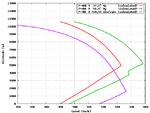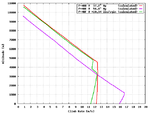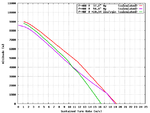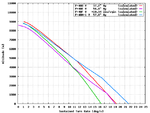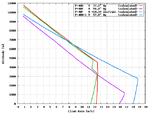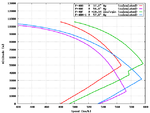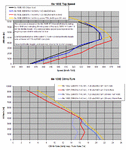Hi everyone,
Here some graphs on the performance of the Allison- versus the Merlin-engined Curtiss P-40 fighters.
That the P-40F was not as good as one might have expected has two main reasons: It was using an early Packard-built V-1650-1 that was similar to the two-speed, single-stage 20-series Rolls-Royce Merlin and not as powerful as the later V-1650 engines fitted to the Mustang that were based on the 60-series Merlins. Additionally, the P-40F was 160 kg heavier than the P-40E, and an amazing 750 kg heavier than the P-40B, which of course had considerable impact on its performance.
(The Allison-vs-Merlin issue was raised in this thread:
http://www.ww2aircraft.net/forum/aviation/p-38-merlin-engines-any-such-animal-13759.html
However, since that was a P-38 thread I decided to start a new one for the P-40 here.)
Regards,
Henning (HoHun)
Here some graphs on the performance of the Allison- versus the Merlin-engined Curtiss P-40 fighters.
That the P-40F was not as good as one might have expected has two main reasons: It was using an early Packard-built V-1650-1 that was similar to the two-speed, single-stage 20-series Rolls-Royce Merlin and not as powerful as the later V-1650 engines fitted to the Mustang that were based on the 60-series Merlins. Additionally, the P-40F was 160 kg heavier than the P-40E, and an amazing 750 kg heavier than the P-40B, which of course had considerable impact on its performance.
(The Allison-vs-Merlin issue was raised in this thread:
http://www.ww2aircraft.net/forum/aviation/p-38-merlin-engines-any-such-animal-13759.html
However, since that was a P-38 thread I decided to start a new one for the P-40 here.)
Regards,
Henning (HoHun)

